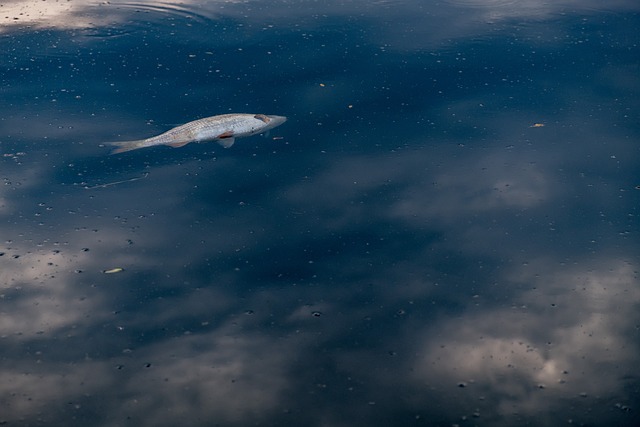Wolves in Minnesota Switch to Fish as a Main Source of Food in the Spring

A team of wildlife specialists from the University of Minnesota, the University of Manitoba and Voyageurs National Park has found that wild wolves living in Minnesota tend to switch from feasting on larger prey to fish as their main source of food in the spring. In their study, reported in the journal Royal Society Open Science, the group used a variety of methods to study the eating behavior of wolves in Minnesota over a four-year period.
Currently, approximately 2,700 gray wolves make their home in Minnesota—a number far lower than when humans first arrived. Minnesota is the only state in the lower 48 where gray wolves have lived since humans became the dominant species. They are currently listed as threatened, and wildlife scientists and state officials track their numbers and health.
One area of concern is their diet. The main food source for wolves in Minnesota is deer, followed by smaller mammals such as beavers. Prior research has suggested that at times, wolves will catch and eat fish, as well. In this new effort, the research team sought to learn more about this latter source.
To learn more about the behavior, movements and hunting activities of the wolves, the researchers set up remote cameras, affixed GPS collars, and in one case, even fitted a wolf with a camera to collect information about the wolves over the years 2017 to 2021.

The research team found that wolves do, in fact, catch and eat fish, almost exclusively in the spring. This was because deer are a less reliable food source due to reductions in population each year over the hunting season. In the spring, this becomes more problematic for the wolves because the females give birth, which requires more food.
Fortunately for the wolves, springtime is also when fish tend to spawn. Also working in their favor are beaver dams, which tend to make it difficult for fish to swim upstream, leading to multitudes of them congregating both up and down river from the dams.
The wolves have found that fishing downriver, where water levels are lower, is easier. They have also found that the fish tend to remain in place at night, which is when the wolves go fishing. Cameras capturing the action show that fishing requires little time or effort, making it easy for the wolves to catch enough to feed both themselves and their pups.